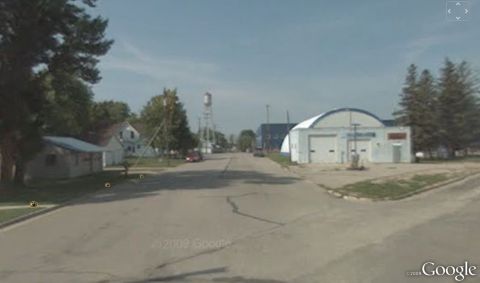Transactions of Decline, Lowry Edition
We wrote about the small city of Backus in February and a number of readers had a hard time believing what we were posting. How can a city of just 311 people expect to get $3.3 million in state and federal assistance - roughly $27,000 per family - just to maintain their existing wastewater treatment system. Don't we have class sizes that need reducing? Health care that needs funding? Insolvent banks that need propping up?
How can we, in good conscious at a time of immense need, bestow such largess on a remote town with no economic significance?
The last is actually the easiest question to answer. Funding Backus is a classic transaction of decline as described by the greatest planning thinker of the last century, Jane Jacobs. It is a long-term subsidy of an impoverished area that neither provides the receiver a better life or frees society from the need of future subsidy. It is destructive to both sides of the equation, but it is what we do (like all declining empires, as Jacobs describes).
The Minnesota Public Facilities Authority just announced their next round of grant and loan "award" recipients and Backus was not on the list. They will need to wait in line for a little while longer. But it will only be a matter of time. As we wrote last February:
...the Backus project will be funded. If not through the state bonding process, than through some other grant program. They meet all the requisite criteria. Specifically, they pose an imminent public health threat and they have a low household income. In the business, this is a good project.
Having waited their turn long enough is the town of Lowry, MN. According to the announcement, being awarded in this round is:
$600,000 to Lowry, pop. 280, for replacing the municipal wastewater collection system and building a wastewater treatment system. Along with the $600,000 grant from the PFA, Lowry also received a grant of $580,000 from the Small Cities Development Program and a grant and loan of $2 million from the U.S. Department of Agriculture-Rural Development.
Lowry has approximately 110 households
- Total Grant: $1.2 million ($10,700 per household)
- Total Loan: $2.0 million ($18,200 per household)
- Total Project: $3.2 million ($28,900 per household)
A loan of $2 million financed by USDA will likely be at a low rate (3%) over a long period (40 years). If we use those numbers, it would yield an annual bond payment by the city of Lowry of $86,600. This is interesting because the entire 2009 levy for the city of Lowry - the amount they taxed their property owners - was just $87,001. The 2009 property tax rate for Lowry was 61% compared to a state average of 36%, so it is not like the residents are not already "paying their share". Despite all this, Lowry also received $52,000 in direct aid from the state to augment their budget.
Yes, you read that correctly. The cost of this project is equivalent to 37 times the amount raised locally from property taxes. That would be proportional to the city of Minneapolis getting state funding for a $7.6 billion project. For those not good with numbers, that would be like 16 new stadiums.
For their part, the residents of this town:
- Are committing to paying an amount double their current tax payment each of the next forty years. The additional amount each family is now going to pay will be roughly $790 per year, just to maintain their system.
- Are giving themselves no room for error. Their tax rate is already too high to attract a significant amount of growth. Absorbing this "investment" - just to maintain what they now have - and weathering pending cuts in Local Government Aid will be a significant challenge. The population can't drop without creating a downward spiral of further tax increases and spending cuts.
- Have given up any chance at prosperity or long-term financial stability under a new approach. Instead they are doubling down on a system they keenly understand they cannot afford.
As a general taxpayer:
- We are essentially giving each Lowry household a gift of $10,700. What do we get in return? Financially, absolutely nothing. Socially, very little unless you value indentured servitude.
- We are essentially loaning each Lowry household $18,200 and financing that loan over a long period of time. That is roughly 12% of the average home price in Lowry, pre-housing correction. Let's not pretend this is a wise investment.
- We are forgoing other investments in infrastructure and capital improvements that could actually grow our economy, create long-term jobs or provide an improved standard of living.
This is cruel, especially when there are other, more affordable options that would better meet the needs of Lowry residents. The only people benefiting from this approach are the engineering companies paid to put these projects together and the politicians that get to attend the ribbon cutting.
We need to make some difficult choices in this country. And while we need to be sensitive about how we handle the thousands of Backus and Lowry situations we have created, discontinuing these transactions of decline should not be a difficult decision. It can't happen soon enough.
 Lowry, MN as captured in Google Street View.
Lowry, MN as captured in Google Street View.
If you think what you read here at Strong Towns needs to be part of the broader public discussion on the future of America, please recommend our site to others. We appreciate all of the feedback and support and the tremendous growth in readership. Thanks to you, we're starting to see Strong Towns ideas as part of the debate on America's future.
You can continue this Strong Towns conversation by posting a comment or by joining us on Facebook or Twitter.
